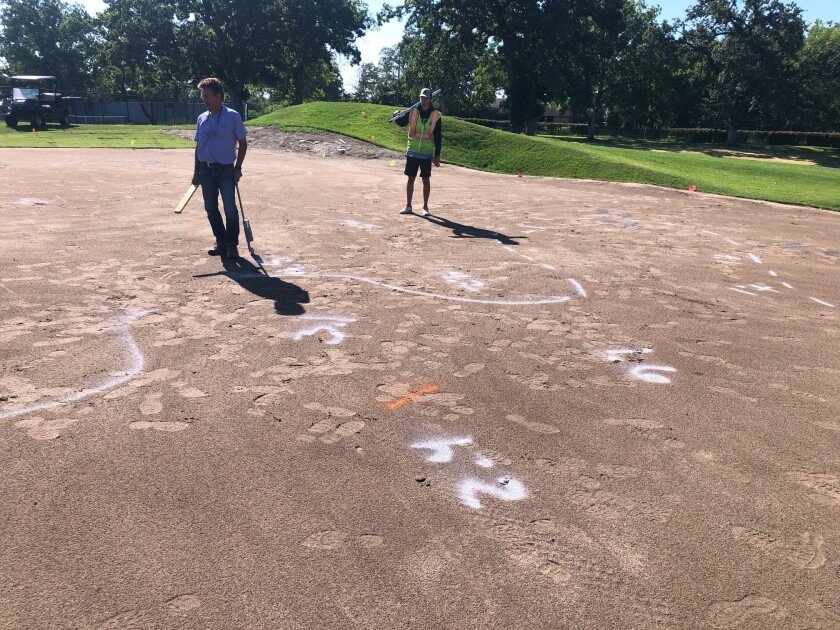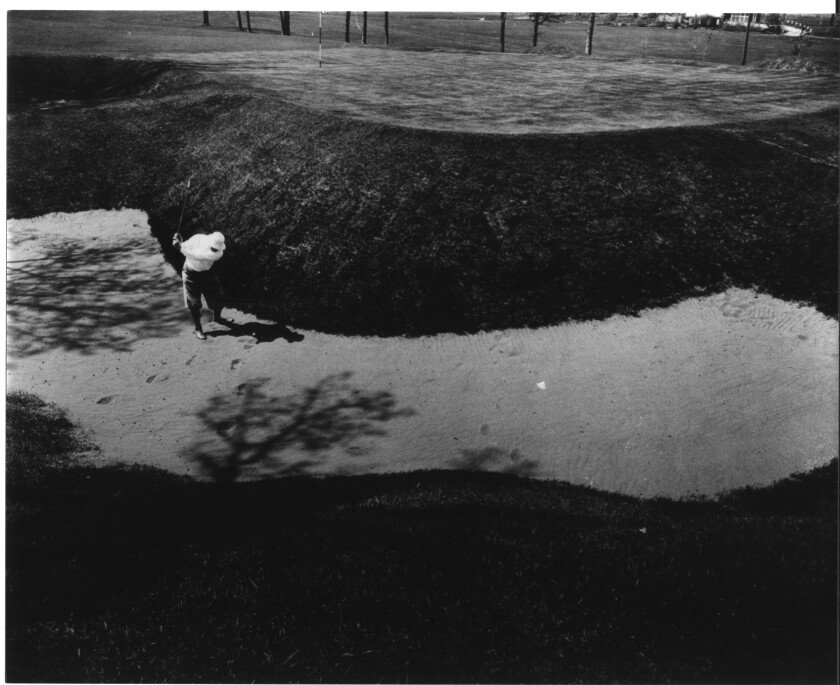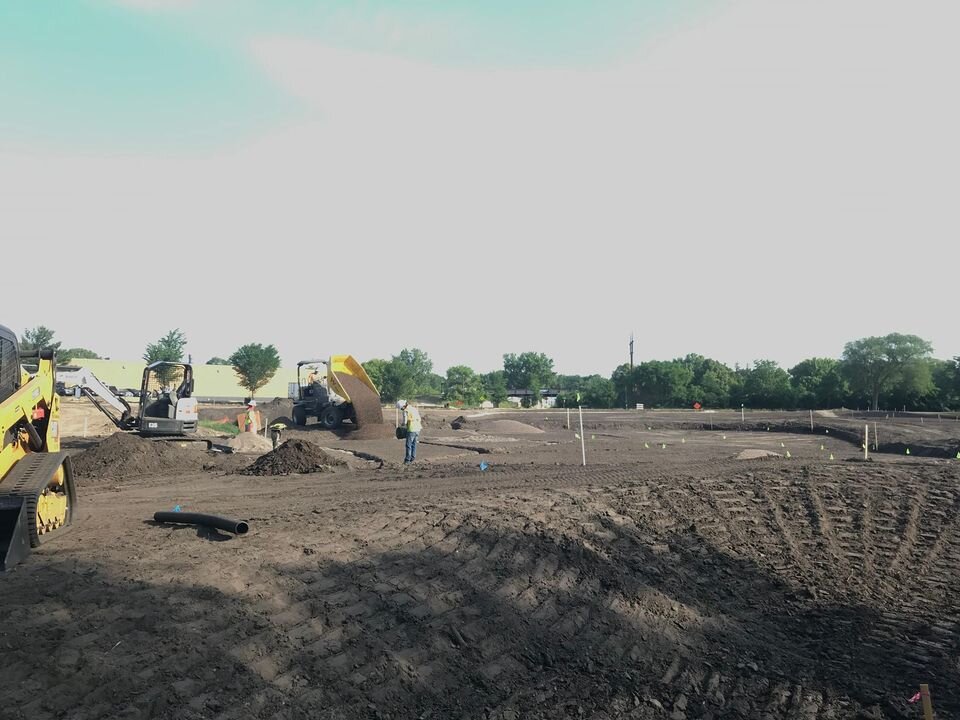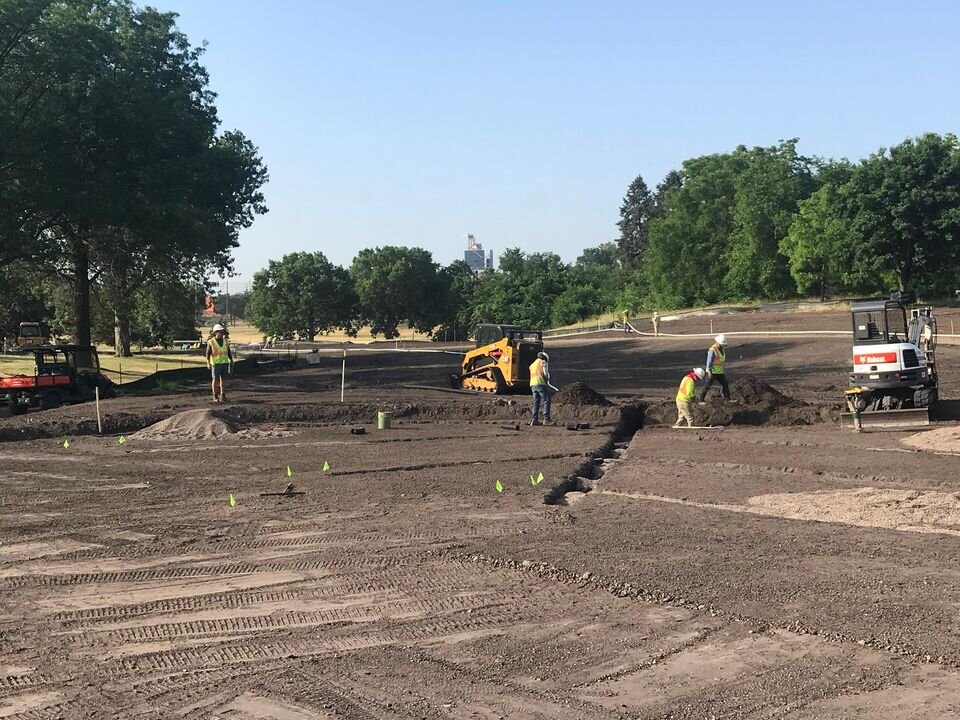After nearly a century, historic Golden Valley Country Club has undergone a stunning restoration. Golf Architect Kevin Norby has overseen the two-year project on the A.W. Tillinghast classic. The restoration will enhance the legacy and memoires today and for the next generation of golfers. Golden Valley Country Club is now ready to take its place among the top courses in Minnesota and the upper Midwest.
Inside Kevin Norby’s restoration of A.W. Tillinghast’s Golden Valley
TFC contributor Bradley S. Klein provides a unique perspective on the club’s two-year process to reclaim the Golden Era architect’s original intent
NOV 19, 2023
Golden Valley Country Club's Kevin Norby-restored 18th hole.
(Photo: Peter Wong)
Editor’s note: The First Call contributor Bradley S. Klein served as a consultant to golf course architect Kevin Norby on the Golden Valley Country Club restoration project. He pulls back the curtain for an inside look at the two-year project.
GOLDEN VALLEY, Minnesota — For the past two years, golf course architect Kevin Norby has been restoring Golden Valley Country Club, an A.W. Tillinghast gem from 1926 in the Twin Cities area.
With the work now done and the course healing up for reopening in 2024, I thought it appropriate to explain what an insider like myself saw and learned along the way about the process. My vantage point was as paid consultant to the designer — a secondary role to be sure, but one that gave me privileged access as well as occasional license to voice my concerns.
Golden Valley, a private membership club only 5 miles west of downtown Minneapolis, Minnesota, struck me immediately by virtue of its routings. The par-73 layout includes six par 5s, five par 3s and only seven par 4s. The property is trisected by a road and by an active railroad track that is played over on the tee shot for the par-5 sixth hole. Those who warm to the classic sounds of a train whistle will feel very comfortable here. The greens are steeply sloped, the greenside bunkers very deep and the grounds are blessed with over two dozen stately elm trees that have managed to survive the blight that otherwise devastated much of American parkland golf in the 1960s and 1970s.
Kevin Norby tests the rollout of Golden Valley's fairways with a baseball.
(Photo: Bradley S. Klein)
Norby, a longtime member of the American Society of Golf Course Architects, is a locally based designer with a long resume of both new courses and renovations across the country — many of them in the upper Midwest. His work at Golden Valley with superintendent David Phillips and the construction team from Duininck Golf was meticulous in ensuring the authenticity of the Tillinghast heritage.
The club’s collection of vintage course photography proved indispensable. So, too, did the advice of Tillinghast biographer and architecture archivist Philip Young, who spent some time on site as well as undertaking background research. At one point we addressed a members’ meeting and helped allay concerns they had by assuring them this project was all being done in the spirit of a Tillinghast restoration.
My own role — in the form of seven site visits, follow-up reports and lots of conversation via email and phone — was to provide a second set of eyes to the project, affirming some decisions Norby made, encouraging him to be bolder when he might otherwise have wavered, and assuring the club not to compromise or in any way hold back when they had this one — and only — chance to get things right. That was especially true when it came to tree removal, bunker slopes and cross bunkers.
Over the years, Golden Valley’s parkland setting had gotten overgrown. Playing corridors had narrowed. Putting surfaces shrank. As green speeds continued to pick up pace through innovation and technology, the putting surfaces lost hole locations and verged on un-pinnable. The bunkers, which had previously been rebuilt, were extraordinarily steep; hard to access and exit, yet they offered such flat sand floors that they were not as visible as originally intended. The depth worked against their aesthetic appeal and neutered their visual impact.
Close study of Tillinghast’s routing plan, along with the archival imagery, revealed a course with an original abundance of fairway bunker. Some of them straddled adjoining fairways and did “double duty” on two holes. Yet many of them had disappeared over the years. The goal of the plan was to recapture those lost bunkers, create more pinnable putting surfaces, regrass the course and recapture its original width and variety of playing angles.
Course architect A.W. Tillinghast's original 1924 routing plan for Golden Valley Country Club.
(Photo: Golden Valley Country Club)
The hope was not only to revive the design but also to use the restoration as a way of attracting new members in what is a highly competitive private-club market. That gave me the latitude to take an argument and run with it consistently: don't worry about offending the sensibilities of veteran members worried about too much change. The point was to make an impact, to draw attention and to be true to the original character of the site. In other words, go for it. Don’t hold back.
Work at the club, budgeted at just under $4 million, commenced in September 2022 with 65 greenside bunkers — outfitted with SandTrapper fabric liners — and greens expansion on most of the putting surfaces. The construction took place amidst ongoing member play and with relatively minor disruptions, other than use of temporary greens. Normal play at Golden Valley resumed in early spring of 2023, but by June 15 the course was shut down for the rest of the golf year to allow for a more ambitious construction effort that targeted 17 new or altered fairway bunkers, a new green at the par-3 eighth hole, and a total regrassing of fairways, greens, and newly leveled tees.
The bentgrass / Poa mix that had come to dominate the main playing surfaces was proving less than ideally durable amidst the harshness of Minnesota’s weather extremes — frigid winters and dry, hot, windy summers. Among the aims of the regrassing were heartier tolerance, reduction of disease susceptibility and drought tolerance. To that end, greens, fairways and tees were all reseeded to state-of-the-art bentgrass.
A crucial element of the restoration was highlighting Tillinghast’s original design boldness while adapting the course to modern playing standards. A few bunkers were moved downfield where the landforms sustained the intended visibility. Yardage gains here and there became possible, though only through minor adjustments of tees. More important than gaining length was shifting tees forward to achieve greater proportional equity from all tee markers. Cart path clutter reduction was also a goal. Much of the original topography that had been covered up was revealed through tree management, fairway expansion and grassing lines that went right up to the edge of bunkers rather than cushioning them with wide swaths of rough.
The original greenside bunker depth at Golden Valley Country Club's 12th hole.
(Photo: Golden Valley Country Club)
The most delicate element was preserving the intensity of green slopes while reclaiming perimeter hole locations. On some greens that meant removing accumulated sand dams through the all-too-familiar and burdensome process of lifting and laying green sod to get back to near-original grade. On the steepest sloping greens, a more nuanced process of peeling back and removing sand was undertaken. When the difference between playable and out-of-control is a matter of 2 degrees slope, it’s not enough to rely upon the feel of your feet on the greens.
Course architect Kevin Norby tracks slope on the Golden Valley greens.
(Photo: Bradley S. Klein )
A laser level and measure were necessary every few feet. There were times when the greens looked like a horizontal version of a chalkboard covered with numbers indicating percentage of slope: 2.3, 5.8, 7.1, 1.4, 7.6. That means 2.3 feet vertically per 100 feet laterally or 5.8 feet, and so on. The occasional 4 or 5 feet is fine as transition, but proper range for hole locations are numbers starting with 1s and 2s and maxing out at 3. The trick, as Norby knows very well, is not to make the greens boringly comatose. Instead, the goal was to keep as much of the original sporting character as possible while finding just enough hole locations for about two weeks of altered cup positions. That means a lot of measuring and lots of painted numbers — and lots of discarded spray paint cans.
Restoration work, like everything involving a golf course, involves a lot of physical work, intense conversation and very long hours. Perhaps that’s why the between- and after-hour banter of the team can provide so much relief. At Golden Valley, this was enhanced by the proximity of a legendary bar and grill, Schuller’s Tavern, across the street from the fourth fairway, on the south side of Country Club Road. We ate many a lunch there, accessed via an unlocked gate hidden behind some trees. It’s one of the not-so-secret getaways for club members, who have been known to park their golf bags and golf carts at the gate, venture over to Schuller’s and return with a six pack or three in tow that will last them the rest of the round.
One keen observer in the whole process was Mark Zeman, the club president and chair of the green and grounds committee. His construction management background made him ideal as the club’s representative overseeing the project. He proved amenable to the occasional deviance from the original plan, as long as we could provide a reasonable explanation.
One of the oddities of Golden Valley is the absence in the original layout of a “Hells Half Acre” bunker complex as a second-shot obstacle on a par 5. You can find that hazardous formation at other Tillinghast courses, including Baltusrol, Baltimore Country Club and Quaker Ridge. Looking for a little creative freedom, Norby took his moment and created just such a sand splash at the par-5 18th hole at Golden Valley. It’s now conspicuously in front of the clubhouse, so that members and guests on the patio or at the nearby firepit will have a great view of the travails that wayward golfers might find themselves in.
Call it theatre, call it indulgence or even excess. But what it really is, is an element of classic showmanship. Thanks to Norby having the confidence to take creative license within a distinctly Tillinghast frame of reference, Golden Valley now sports that character. It was an honor to have played a modest role in the work.
Bradley S. Klein is a veteran golf journalist specializing in architecture and maintenance. A former PGA Tour caddie, Klein was architecture editor of Golfweek magazine for 28 years and the founding editor of Superintendent News before moving on to Golf Channel’s GolfAdvisor.com. He holds a doctorate in political science and was a university professor for 14 years in international relations and political theory before leaving academia in 1999 to devote himself fulltime to golf writing.
Little Crow Country Club Doubles Range Revenue after Renovation
Driving range revenue has more than doubled since our renovation at Little Crow Country Club
AvidGolfer Colorado Features Coal Creek Flood Restoration Project
Eight years after a flood nearly destroyed it, Louisville’s only course looks and plays better than ever.
By Chris Wheeler
BY 2013, Coal Creek Golf Course sorely needed a face-lift. After 23 years of steady play and invasive trees and vegetation, Louisville’s Dick Phelps-designed layout was showing its age. The course staff and city officials had already initiated a comprehensive management plan identifying the issues, but as storm clouds gathered in the late summer, the team got a not-so-subtle shove from Mother Nature.
…read more at https://coloradoavidgolfer.com/coal-creeks-high-water-mark
New Par 3 at Columbia Golf Club Renovation
The new par three 155 yard 14th hole at Columbia Golf Club renovation is cored out and ready for drainage@ASGCA @MnGCSA @GCSAA @gcamagazine
"Less is More" Article in ASGCA By Design (Issue 53 Summer 2021)
Course Assessment at Sunbird Golf Club
Conducted our annual review of the golf course with the Board and maintenance staff.
Watford City Golf Course Transforming from 9 to 18-holes
WATFORD CITY, N.D. - North Dakota has more golf courses per capita than any other state.
A community in the Bakken is looking to upgrade its nine-hole golf course to 18.
It’s a sound many who play golf want to hear: brushing the grass. At Fox Hills Golf Course in Watford City, golf and that sound are very popular.
“We have continued to make it the best nine-hole course we could,” says Watford City Golf Board Vice President, David Johnson.
The city-owned golf course has about 400 members. A plan that has been in the works for eight years is slowly becoming a reality.
“We have put a lot of time and effort in our greens. Our greens putt well. But over time the technology of golf clubs have over taken the course,” says Johnson.
For a price tag of $8 million, Fox Hills Golf Course will be transitioning from a nine to 18-hole course. Phase one will consist of 12 holes on new land, and phase two will consist of digging up the current nine holes and building six new holes, a new practice green and a new maintenance facility.
Steve Stenehjem of First International Bank is optimistic about the new project.
“Having a golf course in any community is a very positive thing economically. To have a home on the golf course compared to a home on a city street, it’s very desirable,” says Stenehjem.
Phase one is expected to cost $4.5 million. Watford City is contributing $1 million to the project. Phase two will cost $3.5 million. Those funds will be raised through fundraising.
“I hope it creates a neighborhood out there. We are looking for some multi-family, but mostly single family housing on that side of the community and there will be walking paths throughout,” says Watford City Mayor, Brent Sanford.
With funding in place for phase one, construction is expect to start this summer. Some are already looking forward to what it could mean for the region.
“Couple of years from now we will be playing on an 18-hole golf course that will be a great addition to western North Dakota and a destination for people to come and golf at,” says Stenehjem.
If they build it, people will come.
Phase one of the project is expected to be completed next year. Phase two is projected to be completed in 2018.
Coal Creek Golf Course reopens for play following restoration project
SOURCE: Golf Course Architecture
The Coal Creek Golf Course in Louisville, Colorado, has reopened for play following a restoration project led by the Herfort Norby design firm.
The course suffered devastating storm damage back in August 2013, which saw trees toppled, cart paths damaged, bridges and bunkers washed out, damage to the irrigation system, and tees, greens and fairways across the course covered with rock and silt.
Architect Kevin Norby, the owner and senior designer at Herfort Norby Golf Course Architects, was hired by the city of Louisville in 2011 for a long-range capital improvement plan for the course.
While the storm had a devastating effect on the course, it did provide Norby with the opportunity to accelerate some of his initial plans for Coal Creek, and GCA reported on his work there in January 2014.
The project has now been completed, with Norby saying the changes to the course are quite remarkable.
“Everything you thought you knew about Coal Creek, forget it,” he said. “It’s completely different.”
With assistance from Nebraska-based golf course contractor Landscapes Unlimited, the course at Coal Creek has been re-graded to help protect it against the type of flooding seen during the 2013 storm.
This proved valuable recently, when storms struck the site again in May 2015. However this time the newly introduced drainage and collection areas proved sufficient to prevent significant damage to the course.
With regards to the course itself, the re-grading has created additional contouring and undulation in fairways and green surrounds which were previously flat. This helps enhance both strategy and drainage.
Hundreds of tress across the course have also been removed, while greens on holes eight and sixteen have been moved to enhance sight lines.
A number of bunkers were added, while others were moved or removed as part of the work.
“We aligned all teeing areas, regrassed the green surrounds and moved cart paths to help direct play away from houses on some holes,” Norby explained.
The architect also expressed his satisfaction with the outcome of the project, saying that the ‘new’ course ‘differentiates Coal Creek from other municipal golf courses in the area’.



















